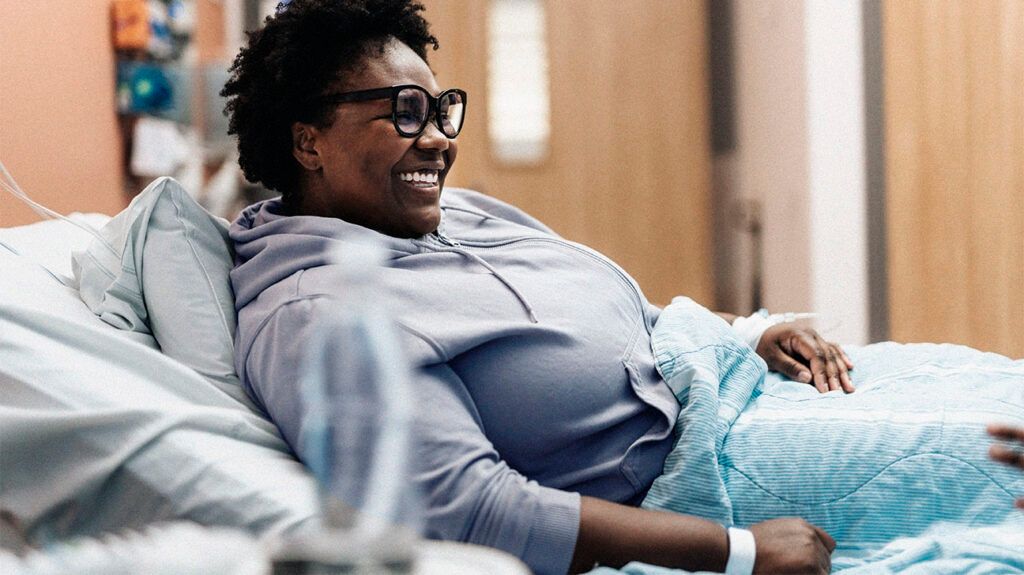The recovery time from arthroscopy may vary depending on the joint requiring surgery and the reasons behind it. Recovery may take between a few weeks and several months.
Arthroscopy is a type of keyhole surgery a doctor may use to find the cause of joint issues, examine the health of joints, repair damage to the joints, or remove pieces of bone.
Arthroscopy involves a surgeon making small incisions in the skin around the joint before passing a small camera with a light inside to examine or repair it.
This article looks at how long it may take to recover from an arthroscopy, if a person may experience pain following the procedure, aftercare steps, possible complications, and more.

It may take between 1 week and several months to fully recover from an arthroscopy.
The recovery time may vary according to the joint requiring the arthroscopy, what the surgeon repairs, and why a person underwent the procedure.
According to a 2019 study, it may take approximately
Research from 2017 suggests the recovery time following a knee arthroscopy is approximately
A 2023 study found it can take
According to the American Academy of Orthopaedic Surgeons, a person will experience some pain following an arthroscopy. This is a typical part of the healing process.
A person may also experience swelling and stiffness in the joint following an arthroscopy.
A person may be able to ease pain by:
- resting
- elevating the joint
- using ice on the joint
A person may also want to consider over-the-counter (OTC) pain medications to help manage pain.
Several aftercare methods may be able to help a person manage recovery.
Medications
A person may want to consider pain medications if they are experiencing pain following an arthroscopy.
A doctor may also prescribe medication, such as aspirin, to help prevent blood clots.
Wound care
Following an arthroscopy, a person will have small wounds from the incisions into the skin.
A surgeon will advise when to change the dressing and how long to keep it dry. This will usually be for around 3 days.
Bearing weight
Following an arthroscopy, a person may not be able to bear weight on the joint for some time.
However, this may vary depending on the affected joint and the reason for the arthroscopy. The doctor or surgeon can provide more information about when a person may be able to bear weight after the procedure.
Physical therapy
A
A physical therapist can help create an exercise program that may be beneficial in the weeks after surgery to help improve final outcomes.
The amount of time before a person can begin exercising following an arthroscopy may vary.
A person may be able to return to usual physical activity after approximately 6 to 8 weeks following a knee arthroscopy.
According to the American Academy of Orthopaedic Surgeons, low impact, strengthening exercises can begin immediately after a knee arthroscopy. It is an important part of recovery.
A person may need to wait between
Returning to exercise early in the recovery from a shoulder arthroscopy may improve healing time and reduce joint stiffness. However, the exercises should be very low impact for at least the first
An arthroscopy is a minimally invasive surgery, so the risk of serious complications is low.
However, several possible complications could occur following an arthroscopy. These
- deep vein thrombosis (DVT)
- a buildup of fluid around the joint
- infections of the skin and in the incision site
- bleeding into the cavity of the joint
- bruising
- swelling
- joint stiffness
- instability
- pain
- injuries to the nerves, arteries, or veins around the joint
Here are some frequently asked questions about arthroscopy.
How long do you have to be off work after knee arthroscopy?
The length of time a person needs to have off work after knee arthroscopy may vary depending on the type of work a person does.
A person may be able to return to working an office job after 2 to 3 days. However, if a job involves heavy manual work, a person may require up to 6 weeks off.
However, it is important to speak with the surgeon to find out exactly when a person might return to work based on the individual’s circumstances.
What can you not do after knee arthroscopy?
Following knee arthroscopy, a person may need to limit or avoid putting any weight on the joint. A person may also need to avoid driving for a few weeks and high impact sports or exercise for more than 2 months.
Recovery from arthroscopy can take weeks or months. The amount of time it takes to recover may depend on the joint that requires the arthroscopy and why a person needs the procedure.
A person may need to take some time off work and avoid high impact sports and exercise. However, there are several ways a person can help their recovery process. These include physical therapy, medications, and looking after the wound.
A doctor or surgeon can provide the person with more information about what they can expect from recovery based on the individual’s circumstances.
